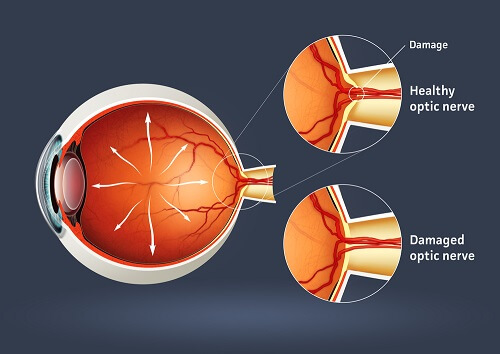Leading Eyecare Near Me: Specialist Providers for Optimum Eye Health
Leading Eyecare Near Me: Specialist Providers for Optimum Eye Health
Blog Article
Understanding the Various Vision Improvement Procedures Available for Clearer Sight
In the world of vision correction procedures, a plethora of choices exist to address refractive mistakes and give people with more clear view. From the widely identified LASIK surgical treatment to less invasive procedures like PRK and implantable lenses, the field of ophthalmology uses a series of strategies tailored to suit different needs and preferences. Each procedure includes its own collection of factors to consider, advantages, and possible threats. Understanding the nuances of these vision modification techniques is critical for making educated choices concerning one's aesthetic health. Let's check out the complexities of these procedures and dropped light on the path to accomplishing improved vision clearness.
LASIK Surgical Treatment
LASIK surgery is a typical refractive treatment utilized to deal with vision issues such as nearsightedness, astigmatism, and farsightedness. This surgical technique, which stands for Laser-Assisted in Situ Keratomileusis, aims to reshape the cornea to enhance exactly how light is concentrated on the retina, eventually enhancing vision clearness.
One of the main advantages of LASIK surgical procedure is the quick renovation in vision experienced by patients. Overall, LASIK surgery is a popular option for individuals looking for a lasting service for their vision issues.
PRK Treatment
While likewise an usual refractive procedure, the PRK (Photorefractive Keratectomy) strategy differs from LASIK surgical treatment in its strategy to correcting vision troubles. In PRK, rather than developing a flap on the cornea, the outer layer of the cornea, called the epithelium, is completely eliminated. This allows the laser to reshape the cornea to deal with refractive errors such as farsightedness, astigmatism, and nearsightedness straight externally.

In spite of the longer healing time, PRK can generate excellent cause vision enhancement, making it a beneficial alternative for those who might not be ideal candidates for LASIK surgical treatment.
Implantable Lenses
As opposed to PRK where the cornea is improved straight, implantable lenses use an additional approach for dealing with vision by putting fabricated lenses inside the eye. This treatment is specifically advantageous for individuals with high degrees of nearsightedness, astigmatism, or farsightedness who might not be ideal prospects for laser surgical treatments like LASIK or PRK.
Implantable lenses, likewise referred to as phakic intraocular lenses, work by supplementing the eye's all-natural lens with a fabricated one. refractive surgeries in al. These lenses can be positioned before the natural lens (former chamber) or behind the iris and before the natural lens (posterior chamber) By adjusting the power and positioning of these lenses, eye doctors can successfully fix refractive errors and enhance aesthetic acuity
One advantage of implantable lenses is that they are exchangeable and removable, offering flexibility for future adjustments. As with any medical treatment, there are dangers involved, such as infection or cataract development. Individuals thinking about implantable lenses should seek advice from with an eye care specialist to establish the most ideal choice based on their specific needs and eye wellness.
Corneal Rings
Corneal rings, likewise recognized as intracorneal ring sections, are small, clear devices put into the cornea to deal with vision distortions such as keratoconus. Keratoconus is a condition where the cornea thins and protrudes external, causing vision to come to be distorted. The insertion of corneal rings assists to squash the cornea, improving aesthetic skill and decreasing the irregular astigmatism created by keratoconus.
The treatment for putting corneal rings is reasonably fast and minimally intrusive, typically carried out as an outpatient procedure. Throughout the surgery, the ophthalmologist makes a tiny laceration in the cornea and inserts the rings at a certain deepness. When in place, the rings aid to reshape the cornea, supplying a smoother surface for light to go into the eye, which can cause clearer vision.
Corneal rings are considered a reversible treatment, as they can be gotten rid of or changed if required. refractive surgeries in al. While they may not totally get rid of the demand for glasses or get in touch with lenses, corneal rings can considerably boost vision quality and general visual convenience for individuals with keratoconus or other corneal irregularities
Refractive Lens Exchange
Complying with the adjustment of corneal abnormalities with treatments like corneal rings, an additional vision correction technique that can deal with refractive mistakes is Refractive Lens Exchange (RLE) RLE is a surgery that involves replacing the eye's natural lens with a man-made intraocular lens (IOL) to fix refractive errors such as presbyopia, farsightedness, and nearsightedness. This procedure is especially useful for people that go to this website may not be ideal candidates for procedures like LASIK or PRK due to aspects such as slim corneas or high refractive mistakes.

Final Thought
To conclude, there are various vision adjustment treatments readily available to assist people attain more clear view. LASIK surgery, PRK treatment, implantable lenses, corneal rings, and refractive lens exchange are all options that can resolve various vision concerns. It is essential for people to seek advice from with their eye treatment Clicking Here supplier to establish the most appropriate treatment based on their details requirements and preferences. With improvements in technology, attaining improved vision is now a lot more available than in the past.
In the realm of vision modification treatments, a plethora of choices exist to address refractive errors and supply people with clearer sight.LASIK surgery is a common refractive treatment utilized to fix vision problems such as farsightedness, nearsightedness, and astigmatism.While also an usual refractive treatment, the PRK (Photorefractive Keratectomy) technique varies from LASIK surgical treatment in its method to correcting vision troubles.Complying with the correction of corneal abnormalities with procedures like corneal rings, another vision improvement method that can address refractive mistakes is Refractive Lens Exchange (RLE) LASIK have a peek at this site surgery, PRK treatment, implantable lenses, corneal rings, and refractive lens exchange are all choices that can address various vision issues.
Report this page